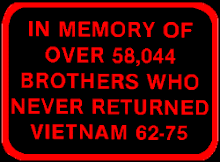Military word/phrase origins.
HORRIBLE ETYMOLOGICAL REVELATION. In 1941 American military etymology lovers discovered with horror that the abbreviation CINCUS (Commander-in-Chief, US Fleet) implied the invitation to the enemy 'Sink Us'. The abbreviation abetting the enemy was hastily changed.
ETYMOLOGY TORPEDOED. Everybody knows about that naval weapon 'torpedo'. But only few people are aware of the connection of this word with the fish world though the torpedo was often called a 'tin-fish', a 'kipper', etc. The word 'torpedo' is a metaphorical transfer from the name in Latin of an electric ray from the family Torpedinidae which possesses a peculiar organ enabling it to stun its prey with electric shock.
EIGHTBALL. 'Eightball' is a highly uncomplimentary slang word standing for a rather objectionable character ('gold brick', 'goof'). The word owes its origin to the billiard game where the number 8 ball has some restrictive associations which make it an object of disapproval. Namely, in a pocket billiard game, popular in the USA, the player loses if he directs the eight ball into the pocket. Hence, the phrase 'be behind the eightball' (in trouble).
In the Army the word has likely connections with the expression 'Section 8' which was a section of provisions specifying the reasons for discharge from military service. 'Section 8' defined the reasons for discharge for reasons of mental, psychiatric deficiencies and therefore 'Section 8' figuratively means a 'psycho', a 'moron'.
DRONE. A drone is a collective name for pilotless aircraft. But original meaning was and is 'the male of the honeybee and other bees'. This particular kind of the insect through clear associations was connected with such notions as 'one who lives on the labor of others', 'an idler', 'a sluggard'.
These associations underlie the transfer of the meaning to an aircraft which was steered by remote control without a pilot. Initially, pilotless aircraft were used as air targets for training AA gun crews. These targets were marked with black stripes along the tail part of the fuselage. These stripes looked like those of a drone (the insect). Hence, the nickname.
Nowadays pilotless aircraft are distinguished as drones and RPVs (remotely-piloted vehicles). Drones are program-guided while RPVs are piloted from a distance by operators. It is curious to know that bomber air crews called jokingly air gunners 'drones'. Probably because air gunners were idle during flights and had only lots of things to do when firing at enemy fighters.
SEESAW BATTLE. 'Seesaw battle' is fighting with inconclusive result for both sides, with ups and down of war luck. A very well-known plaything of children (a rocking plank with a support at the middle) used to provide fun for kids was associated with some combat operations. British also use the phrase 'ding-dong battle' where 'ding-dong' is a figurative expression of back and forth motion of the knocker of a bell.
Subscribe to:
Post Comments (Atom)


No comments:
Post a Comment